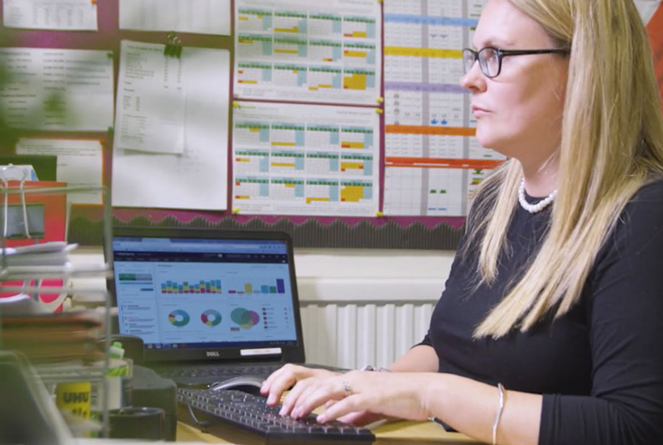Introduction
With more than 1.7 million pupils (18.4%) now identified as having SEND - a rise of 5.6% since 2024 - providing practical support for learners with additional needs has never been more vital.

This checklist, created by Maria Thomas, an Education and Training Advisor at Juniper Education who specialises in safeguarding and SEND, is here to guide SENDCos, senior leaders, and teachers through the key tasks involved in supporting SEND pupils.
With so many responsibilities to balance, it helps make sure nothing important gets missed- covering everything from updating plans to monitoring progress, so schools can provide the best possible support and improve outcomes for every child regardless of their needs and abilities.
A practical SEND checklist for schools
Identification and register accuracy
Keeping your SEND register up to date and accurate is incredibly important because a clear picture of who needs support — and what that support should look like — helps staff make early interventions and tailor learning accordingly.
✔️ Review and update the SEND register (SEN Support and EHCP pupils). Schedule a regular formal review e.g. termly in addition to changes you make to this working document.
✔️ Ensure all staff know who is on the SEND register in their classes.
✔️ Reassess pupils who may no longer meet criteria, or who now require additional support. If you have not already done so, make sure you discuss this with parents/carers as well. This should form part of the assess, plan, do, review cycle.
✔️ Check that all pupil needs are accurately recorded (e.g. communication and interaction, cognition and learning, SEMH, sensory). You may wish to identify which is a primary, secondary need etc.
EHCPs and SEND support plans
Regularly reviewing EHCPs and support plans ensures that the provision in place matches each pupil’s current needs. It also keeps everyone — staff, families, and pupils — working towards the same outcomes.
✔️ Review EHCPs and ensure provision is in place and regularly reviewed.
✔️ Align interventions and class support to EHCP outcomes and section F provision.
✔️ Update SEND support plans and ensure they are accessible to staff. If class teachers are responsible for writing and updating the support plan, ensure there is a moderation process in place.
✔️ Involve families and pupils in reviews and target setting. Consider adding a section on the support plan to log their views so all the information is in one place.
Assessment and pupil progress tracking
Tracking progress using a range of evidence is key to recognising how far a pupil has come, even if they’re not working at age-related expectations. It helps you celebrate successes, identify gaps, and plan the next steps more effectively.
✔️ Use small-step or personalised assessment approaches for pupils who aren’t working at age-related expectations. This will help pupils, parents and staff celebrate progress, no matter how small, and identify next steps to work towards.
✔️ Track academic progress using a mix of evidence – not just formal tests. Consider how to effectively use formative assessment tools e.g. mini whiteboards, exit tickets, questioning, misconception checks, low-stakes quizzes.
✔️ Record wider progress too – such as improvements in behaviour, confidence, communication, or friendships. Use qualitative and quantitative data – attendance figures, behaviour data, observations, pupil, parent and staff voice.
✔️ Use teacher judgement, classroom observations, and pastoral insights to build a full picture of each pupil.
✔️ Focus on how far a pupil has come from their starting point, rather than comparing them to age-related expectations alone.
Top tip: Some schools use software with built-in SEND features, like Sonar Tracker, to help monitor progress more closely over time and to generate reports.
Quality first teaching and classroom support
Making sure all classrooms provide inclusive, high-quality teaching means that pupils with SEND are supported from the very start — not just through interventions, although interventions are still important. It helps reduce barriers and gives every child the best chance to succeed.
✔️ Audit classroom provision for inclusivity and accessibility. How accessible is the layout? Are there any sensory issues that could impact pupils?
✔️ Ensure high-quality teaching strategies are applied consistently (e.g. scaffolding, chunking, adaptive teaching).
✔️ Provide relevant CPD for staff to meet SEND needs.
✔️ Monitor and support the impact of TAs and in-class interventions. Ensure there is a clear line of responsibility and communication around interventions.
Provision mapping and intervention planning
Logging and reviewing interventions regularly is crucial for knowing what’s working and what’s not. It ensures support is purposeful, focused, and closely tied to each child’s individual needs — not just added on as an afterthought.
✔️ Log all interventions, including who they’re for, duration, and intended outcomes.
✔️ Link each intervention to a specific pupil need or EHCP target.
✔️ Regularly review interventions for impact and adjust as needed. Consider who will track impact and how.
✔️ Ensure provision is balanced between academic, social, and emotional support.
✔️ Make sure academic interventions link back to main classroom teaching (e.g., pre- and over-learning). Keep interventions short, sharp, and focused.
✔️ Consider where interventions will run. If the classroom is the provision, is there an appropriate space within it?
✔️ When external agencies run interventions (e.g., Speech and Language therapy), consider how pupils will be reintegrated into the classroom.
Family engagement
Building strong relationships with families means better support for the pupil. When families feel informed and involved, they’re more likely to share useful insights, raise concerns early, and reinforce strategies at home.
✔️ Schedule regular, structured communication with parents and carers.
✔️ Involve families in setting and reviewing support plans.
✔️ Share progress using accessible language and celebrate small wins.
✔️ Provide information on external services and support where appropriate.
Top tip: Keep families involved and included in their child’s learning journey, ideally with termly updates or more frequently if needed, to share progress, discuss any concerns, and maintain open communication.
Governance and Ofsted readiness
Having clear evidence of your SEND provision helps governors fulfil their duties and shows Ofsted how your school supports all pupils. It also makes it easier to spot areas for improvement and celebrate what’s going well.
✔️ Ensure governors understand SEND responsibilities and current challenges.
✔️ Be ready to demonstrate how pupils with SEND are supported and making progress.
✔️ Schedule regular meetings with the link governor for SEND. Plan a range of activities, e.g., meetings with the SENDCo, pupil voice sessions, climate walks, etc.
✔️ Keep documentation and evidence current, including:
• Provision maps
• Pupil case studies
• SEN information report
• EHCPs and SEN Support Plans
• Intervention records and impact reviews
• Assessment data (academic and wider developmental progress)
• Staff CPD records linked to SEND
• Minutes from meetings with parents/carers
• External agency reports or recommendations
• Governor meeting notes relating to SEND
Whole-school strategy and inclusion
Embedding SEND into your school’s wider strategy and values creates a more inclusive culture for everyone. It helps ensure that supporting SEND pupils isn’t just left to one person — it becomes part of everyday teaching and leadership.
✔️ Review your SEND policy and SEN Information Report (statutory annual update).
✔️ Ensure the SEND information report includes all key elements outlined in the SEND Code of Practice.
✔️ Embed SEND in the school improvement plan.
✔️ Promote a whole-school culture of inclusion, high expectations, and aspirations.
✔️ Encourage pupil voice to understand what’s working and what’s not.
SEND support for schools: training and tools that work
Supporting pupils with SEND isn’t just the job of one person — it’s a whole-school effort, and sometimes it can be useful to get outside help too.
If you’d like support with CPD tailored to your SENDCo’s — or you’re looking for tools to help track progress for all pupils, including those with SEND — we’re here to help.
From one easy-to-use platform, we can show you how to stay on top of attainment and progress across your whole cohort.
We’d be happy to give you a quick demo of how it could work in your school.


/Primary%20school%20.jpg?width=2000&name=Primary%20school%20.jpg)








.png?width=940&height=788&name=Lingfield%20College%20Case%20Study%20(5).png)
-1.png?width=1000&height=833&name=National%20Association%20of%20Head%20Teachers%20(3)-1.png)
-3.png?width=1080&height=1080&name=Untitled%20design%20(10)-3.png)






